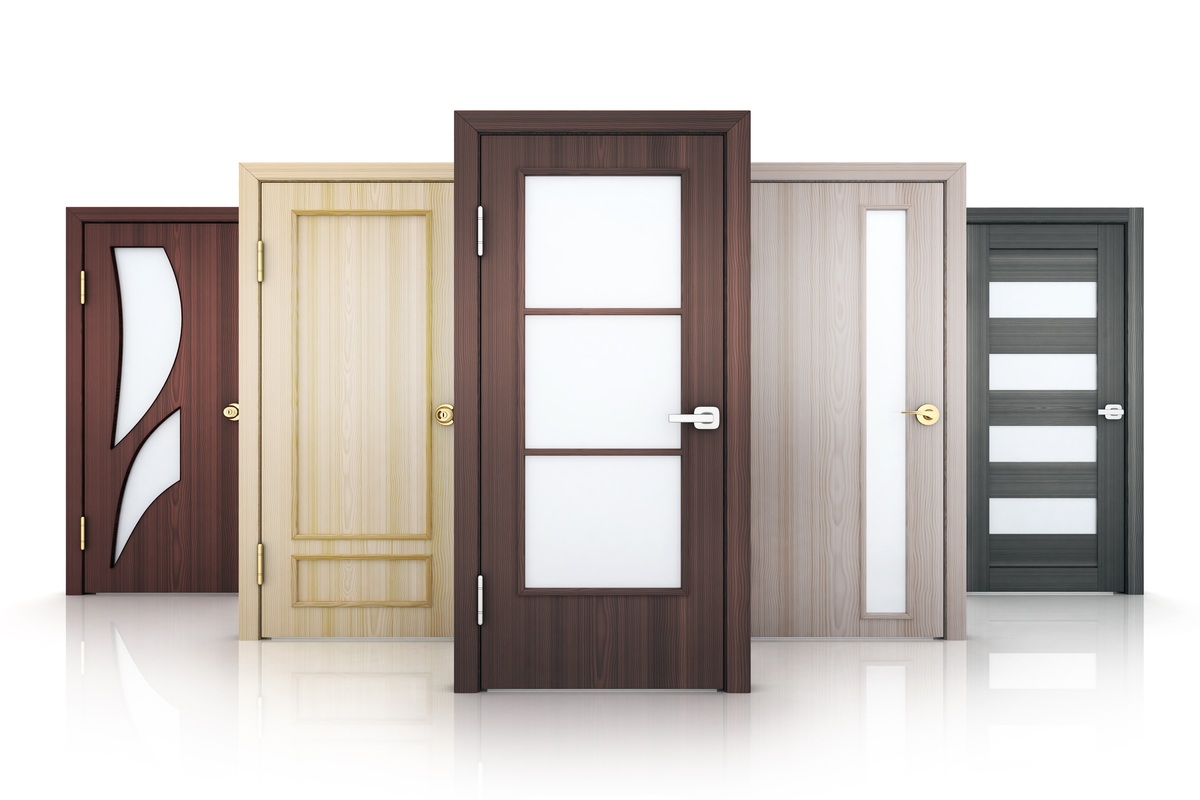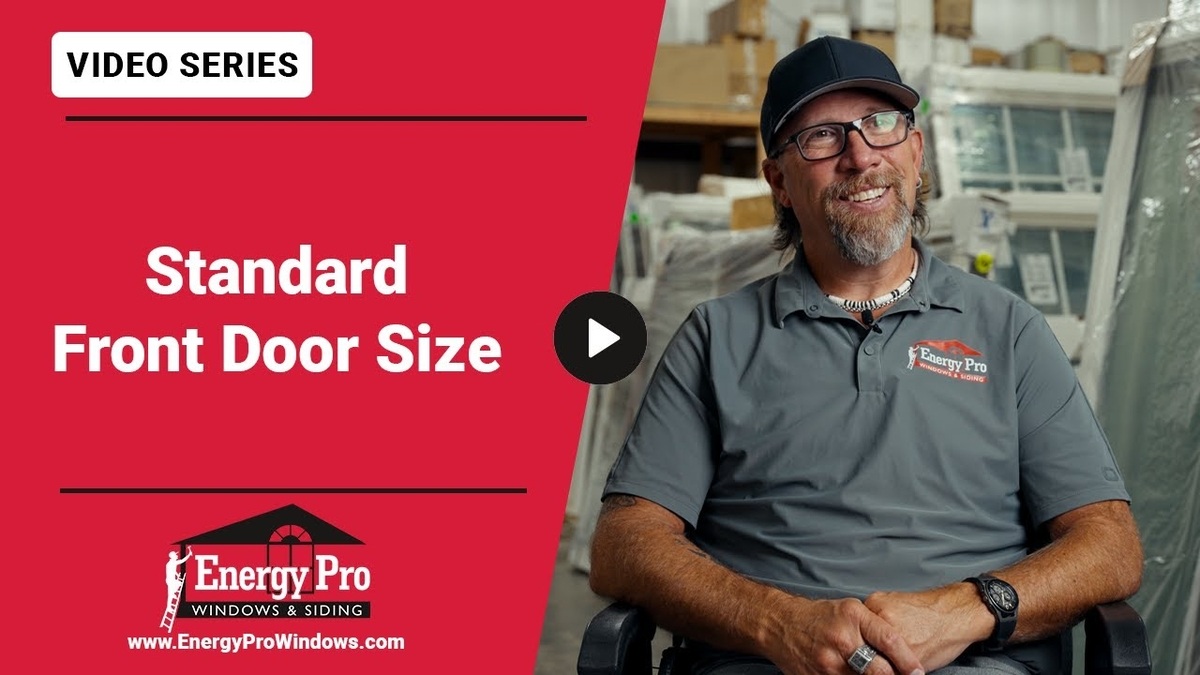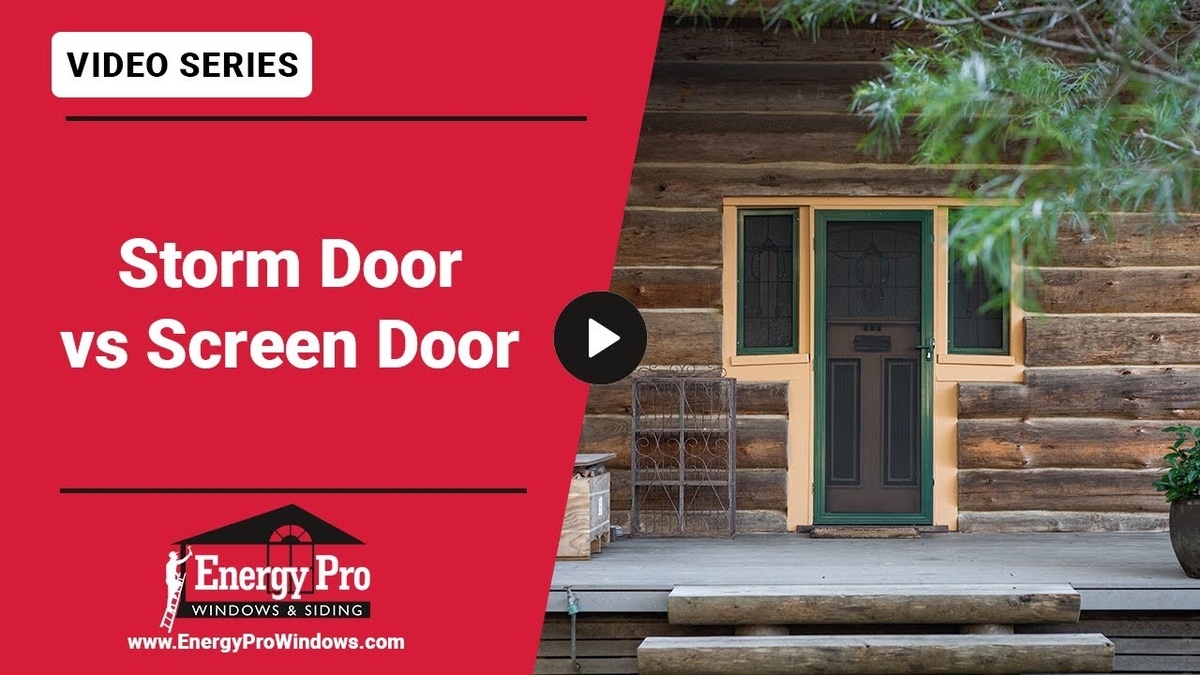Every door material has trade-offs that affect strength, energy efficiency, and upkeep. Some are better for weather resistance, while others offer more design flexibility or cost savings. Knowing the differences helps you choose the right fit for your home. Below, we’ve broken down the most common door materials, along with key pros and cons, so you can make a smart, informed choice.
6 Most Common Door Materials (With Pros & Cons)
1. Wood Doors
Wood is a classic choice and one we still install often. It offers a warm, timeless look and can be stained or painted in many finishes. You’ll find both solid wood and engineered options on the market.
Pros:
- Customizable in size and style
- Strong curb appeal
- Can be refinished over time
Cons:
- Needs regular maintenance (painting or sealing)
- Can warp or swell with moisture
- Higher cost than other materials
Wood doors are great for traditional homes and clients who want a premium, natural look. We recommend using them in covered areas where they’re less exposed to rain or direct sun.
2. Steel Doors
Steel is one of the most secure and budget-friendly choices. We install a lot of steel front doors for homeowners looking for strength and energy savings.
Pros:
- Excellent for security
- Low maintenance
- Insulated core improves energy efficiency
Cons:
- Can dent or scratch
- Limited design flexibility
- May rust if scratched and not sealed properly
Steel doors work well for homeowners who want solid protection without spending too much. They come in smooth or wood-grain finishes and can be painted to match your home.
3. Fiberglass Doors
Fiberglass is one of the most versatile materials we offer. These doors can mimic the look of real wood but hold up better to the weather.
Pros:
- Highly energy efficient
- Resists warping, rotting, and dents
- Low maintenance
Cons:
- Higher upfront cost than steel
- Harder to repair if damaged
Fiberglass doors are ideal for Kansas City homes due to their performance across seasons. Many of our clients choose them for both beauty and long-term savings.
4. Aluminum Doors
Aluminum doors are often used in modern or commercial-style homes. They’re lightweight but strong and usually paired with glass.
Pros:
- Resists rust and corrosion
- Slim frames for a modern look
- Low maintenance
Cons:
- Not the best insulation
- Can dent easily
- Usually costs more than steel
We mostly recommend aluminum for patio or storefront-style doors where large glass panels are part of the design.
5. Vinyl (PVC) Doors
Vinyl is best known for sliding patio doors. We install these in homes where budget and weather resistance are top concerns.
Pros:
- Affordable
- Resists moisture and rot
- Never needs painting
Cons:
- Limited color choices
- Can warp in extreme heat
- Not as strong as fiberglass or steel
Vinyl is one of the best door material options for clients who want simple, low-cost patio doors with decent energy performance.
6. Laminate Doors
Laminate doors are most common indoors. They’re made from fiberboard with a printed layer that gives them color and finish.
Pros:
- Budget-friendly
- Smooth finish for modern interiors
- Easy to clean
Cons:
- Not suitable for exterior use
- Can chip or peel over time
We suggest laminate for bedroom or closet doors when cost and appearance are the main goals.
Specialty and High-End Options
Artisan Steel Doors (Old Mission Style)
These doors are custom-made and often used for statement entrances. We work with steel artisans for clients who want something one-of-a-kind.
Pros:
- Unique, handcrafted appearance
- Heavy-duty construction
- Adds character to older or custom homes
Cons:
- Expensive
- Long lead times
- Requires professional installation
Glass Doors (Full or Partial)
Glass doors are ideal for letting in light. You’ll find them on patios, entryways with sidelights, or interior French doors.
Pros:
- Allows natural light
- Can be frosted or textured for privacy
- Modern and stylish
Cons:
- Lower privacy
- Can lose heat if not insulated
- Needs regular cleaning
We recommend double- or triple-pane glass with insulated frames to get better performance in Kansas City’s changing weather.
Door Material Comparison Table
| Material | Cost | Maintenance | Energy Efficiency | Durability |
Best Use |
|
Wood |
High | High | Moderate | Good |
Covered entries |
|
Steel |
Low | Low | High | High |
Front/back |
|
Fiberglass |
Mid/High | Low | High | High |
Front/back |
|
Aluminum |
High | Low | Low | Moderate |
Patio/modern |
|
Vinyl |
Low | Low | Moderate |
Moderate |
Patio |
| Laminate | Low | Low | N/A | Low |
Interior only |
What We Recommend at Energy Pro
For most Kansas City homes, we recommend fiberglass or steel doors as the best door material options. They give you strong insulation, durability, and long-term value. Fiberglass offers more style flexibility, while steel gives top security at a lower price.
We help you choose the right fit during our free consultation and make sure every door is installed to last.
FAQs About Door Materials
What’s the most energy-efficient door?
Fiberglass and insulated steel doors both offer excellent energy savings.
How long do different door materials last?
Fiberglass and steel can last 20–30 years or more with proper care. Wood requires more upkeep but can last just as long.
Can I just replace the slab, not the frame?
Sometimes, yes, but we inspect the frame first to make sure it’s in good shape.
Get Expert Help Choosing Your Next Door
We make it easy to upgrade your doors with expert guidance, honest recommendations, and quality products. Contact Energy Pro to schedule a free quote and see which door material works best for your home.




